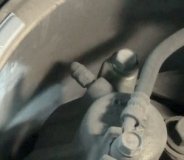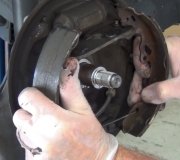I'm afraid to ask this, but is there any chance a petroleum product got dumped into the brake fluid? Problems would take up to a week to show up. This includes engine oil, transmission fluid, power steering fluid, axle grease, and even penetrating oil used on fittings.
Next, how does the brake pedal feel? If it is unusually high and hard, you could have one or both front rubber flex hoses constricted and blocking fluid flow. I can't remember the hose design your truck uses, but if there's a metal bracket crimped around the center of the hose, rust an build up in that crimp and squeeze the hose closed. The more common symptom is you can apply that brake if you push hard enough on the brake pedal, but then that brake won't release. If you don't push real hard on the pedal, that brake won't apply.
Also be aware that most trucks and minivans can have a real wide variety of loading, between passengers and what you're hauling. As such, they use a height-sensing proportioning valve at the rear axle to adjust the amount of braking power to the rear. If the vehicle is jacked up or on a hoist with the rear axle hanging down, that looks to that valve as though the truck is lightly loaded, so most of the brake fluid pressure to the rear will be blocked. You may not even have a problem once the truck is set on the ground.
Thursday, May 18th, 2017 AT 1:04 AM


